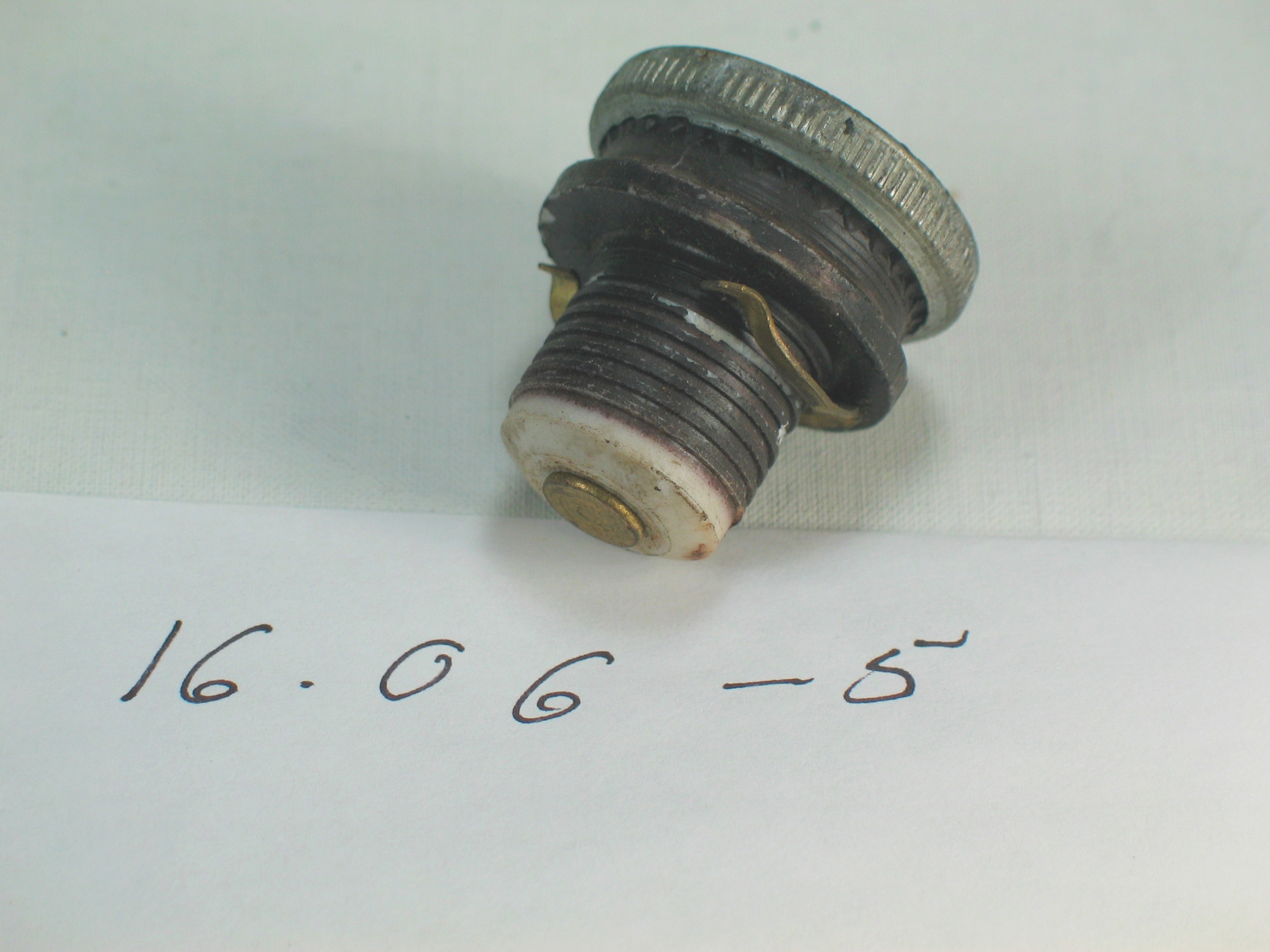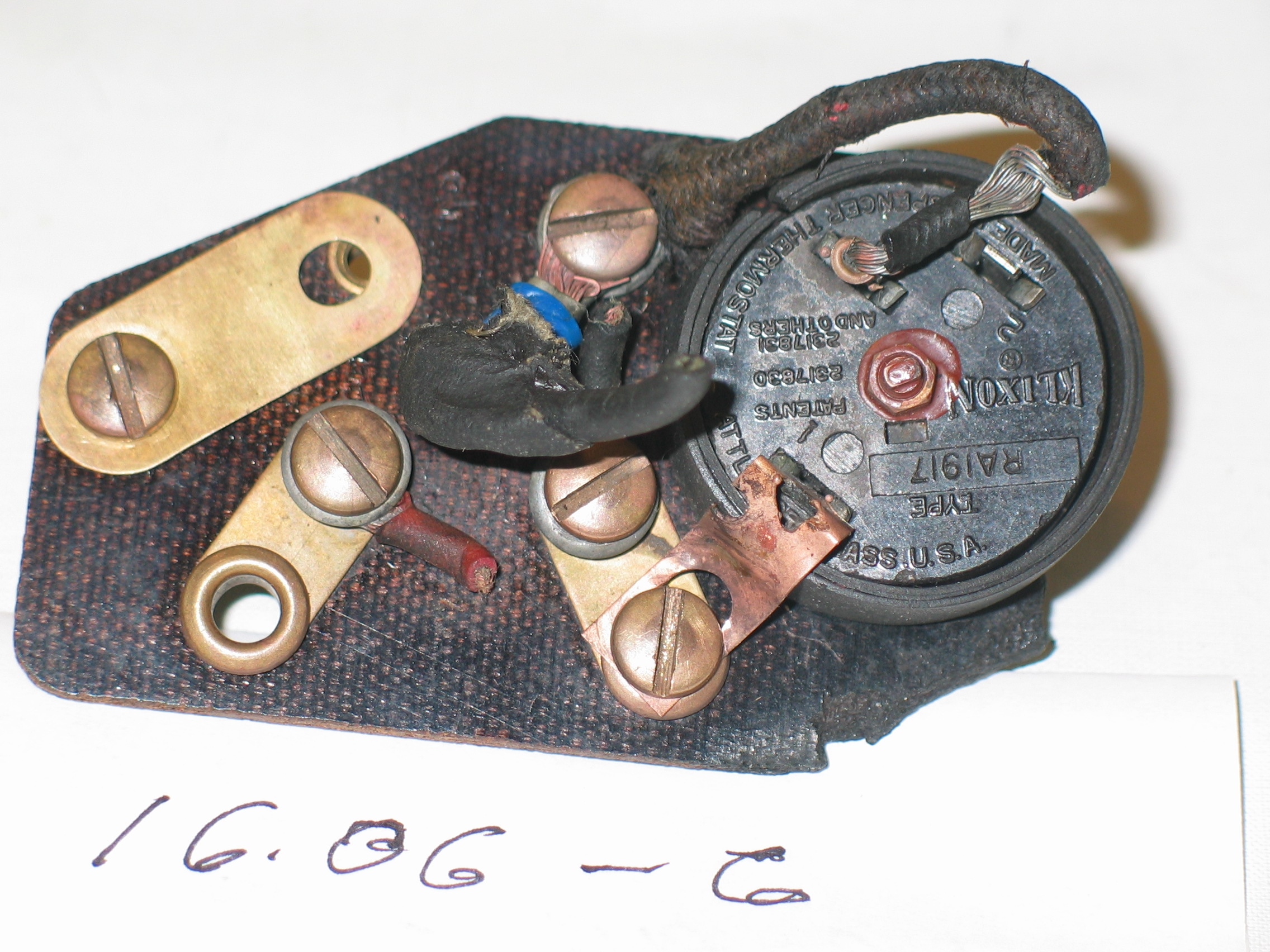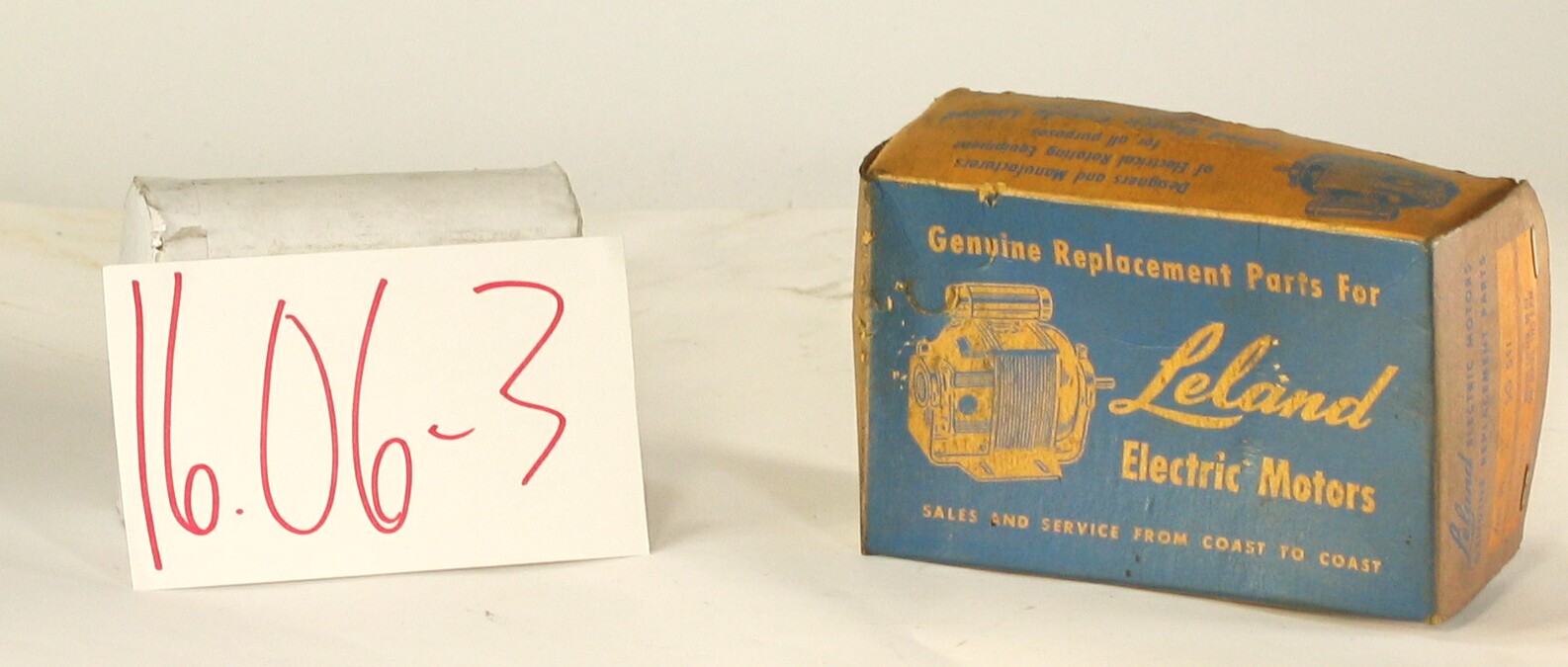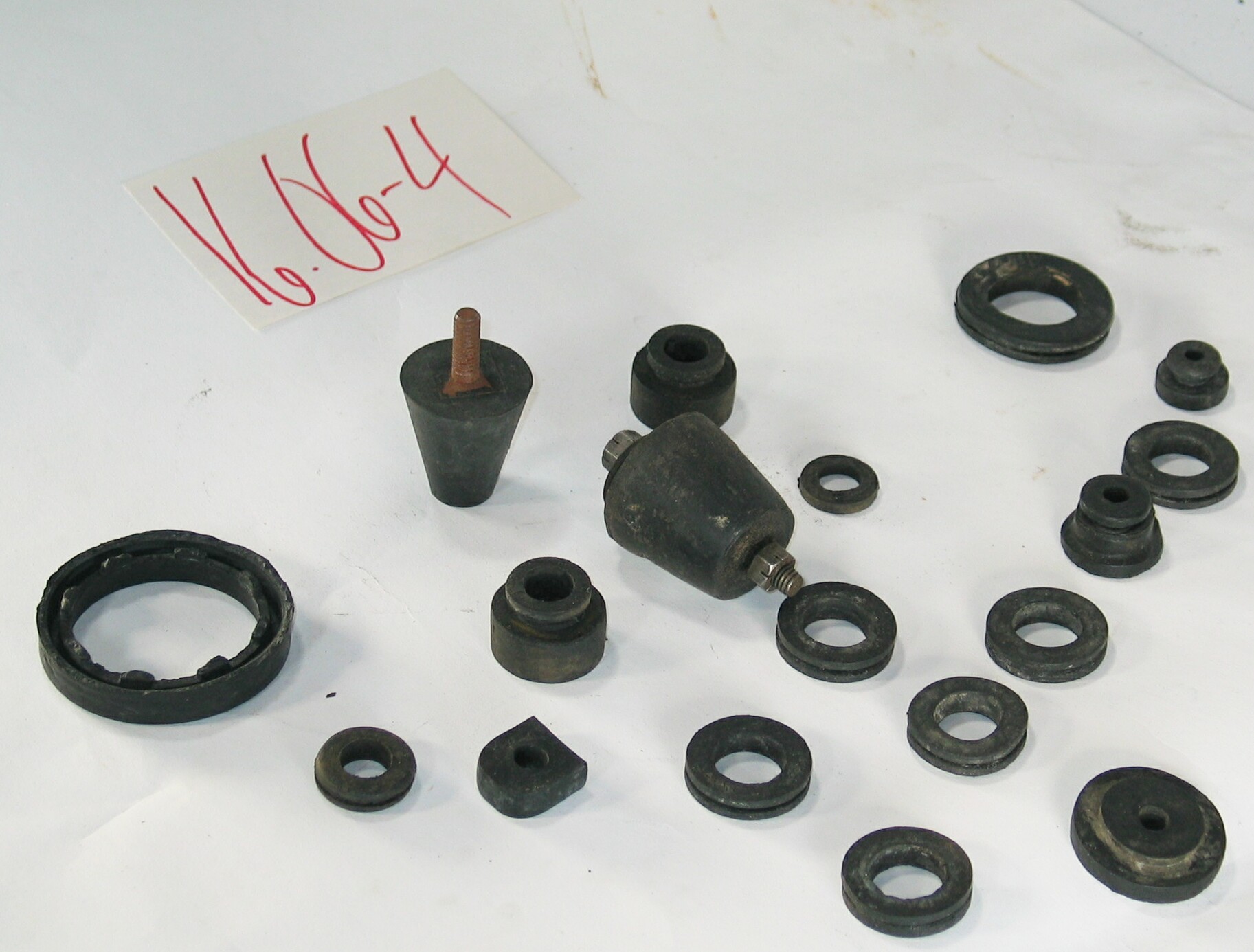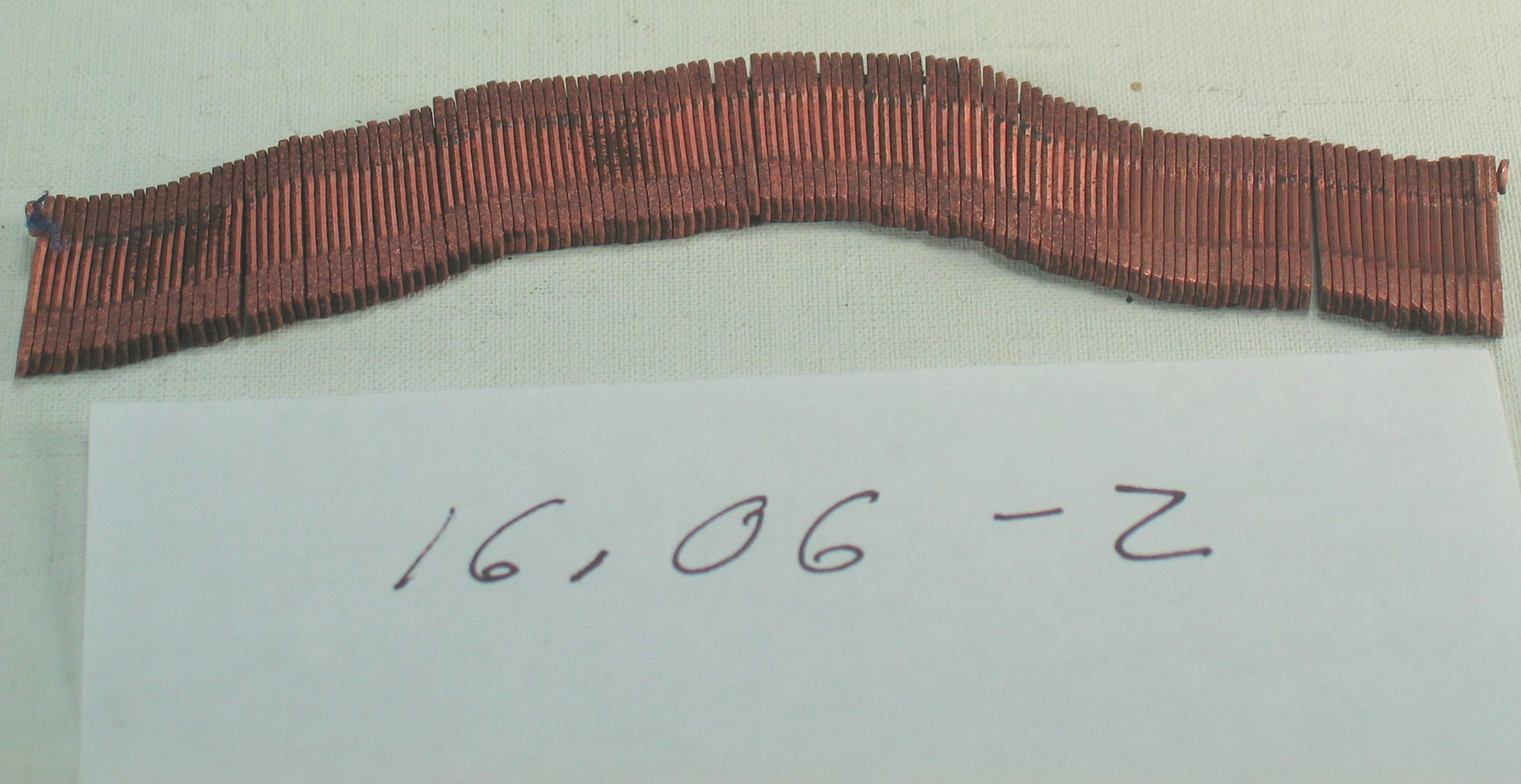16.06-7: 1948 Miniature Armature for FHP AC - DC Electric Motor
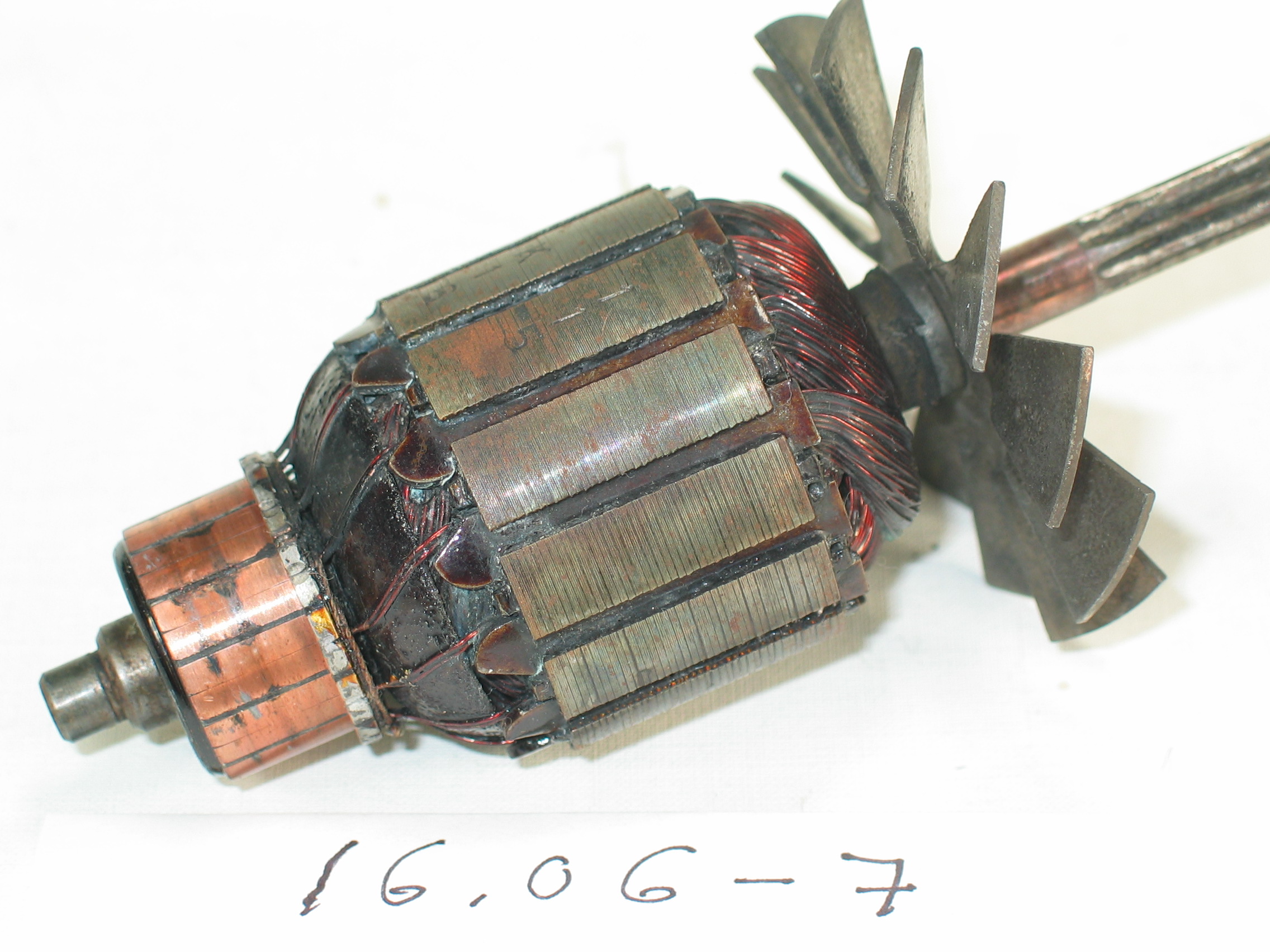
| HHCC Accession No. 2006.208 | HHCC Classification Code: 16.06-7 |
|---|
Description:
Miniature armature for FHP, universal, AC - DC electric motor, equipped with wound rotor, segmented commutator, inherent cooling fan and splined shaft, engineered for custom application, possibly and electric fan, electric drill, vacuum cleaner, or food processor. An engineering and manufacturing wonder of the early to mid 20th century, such technology would help to trigger a ‘sea change’ in Canadian consumer expectations of the good things that the electric appliance industry had in store, manufacturer unknown, circa 1948
Group:
16.06 Electric Motors - Components and Parts
Make:
- unknown
Manufacturer:
- unknown
Model:
- unknown
Serial No.:
Body markings ‘ 52984; K16; 115
Size:
4.5 inch long, 2inch dia.
Weight:
11 0zs.
Circa:
1948
Rating:
Exhibit, education, and research quality, illustrating the design and construction of a wound rotor on laminated steel core, with commuter, inherent cooling fan and splined shaft, as an engineering marvel of the early/mid 20th century.
Patent Date/Number:
Provenance:
From York County (York Region) Ontario, once rich agricultural hinterlands, attracting early settlement in the last years of the 18th century. Located on the north slopes of the Oak Ridges Moraine, within 20 miles of Toronto, the County would also attract early ex-urban development, to be come a wealthy market place for the emerging household and consumer technologies of the early and mid 20th century.
This artifact was discovered in the 1950’s in the used stock of T. H. Oliver, Refrigeration and Electric Sales and Service, Aurora, Ontario, an early worker in the field of agricultural, industrial and consumer technology.
Type and Design:
wound rotor laminated steel core, used to reduce hysteresis and eddy current losses on alternating current, varnished copper armature winding, 13 bar segmented commuter, 13 blade inherent cooling fan and 8 rib, splined shaft, engineered for special applications
Construction:
Material:
Special Features:
Accessories:
Capacities:
Performance Characteristics:
Operation:
Control and Regulation:
Targeted Market Segment:
Consumer Acceptance:
Merchandising:
Market Price:
Technological Significance:
Electro-magnetic and electronic communications technology were to the early years of the 20th century what computer and digital technology were to the early 21st century ‘ a source of great public wonderment, setting new life’s expectations. An immensely enabling technology, the ubiquitous electric motor, in all its many forms would soon be everywhere [see ref 1]. This miniature armature is a marker of the sophistication of FHP electric motor engineering design and manufacturing know-how achieved by the middle of the 20th century.
Industrial Significance:
In 1948, Veinott spoke of the engineering and manufacturing accomplishments of the industries producing small FHP universal motors. He cites the voluminous literature of the times, reflecting the multiplicity of winding patterns and designs developed by the industry for specialised torque applications with particular load characteristic and performance requirements [See Ref 2] The miniaturization of laminated armature construction, winding and commutators capable of standing the centrifugal forces produced by speeds of several thousand RPM, made possible electric fans, vacuum cleaners and food mixers, among other things. .
Socio-economic Significance:
What the technology enabled by the middle of the 20th century was a ‘sea change’ in the expectations of Canadian householders of what the pundits of electro-magnetic technology had in store for them. It would quickly revolutionize the Canadian consumer market place.
Socio-cultural Significance:
Donor:
G. Leslie Oliver, The T. H. Oliver HVACR Collection
HHCC Storage Location:
Tracking:
Bibliographic References:
‘The Fractional Horsepower Motor and its Impact on Canadian Society and Culture’, G. Leslie Oliver, Material History Review, Vol. 43, Journal National Museum of Science and Technology, 1996. ‘Fractional Horsepower Electric Motors’, Cyril Veinott, McGraw Hill New York, 1948
